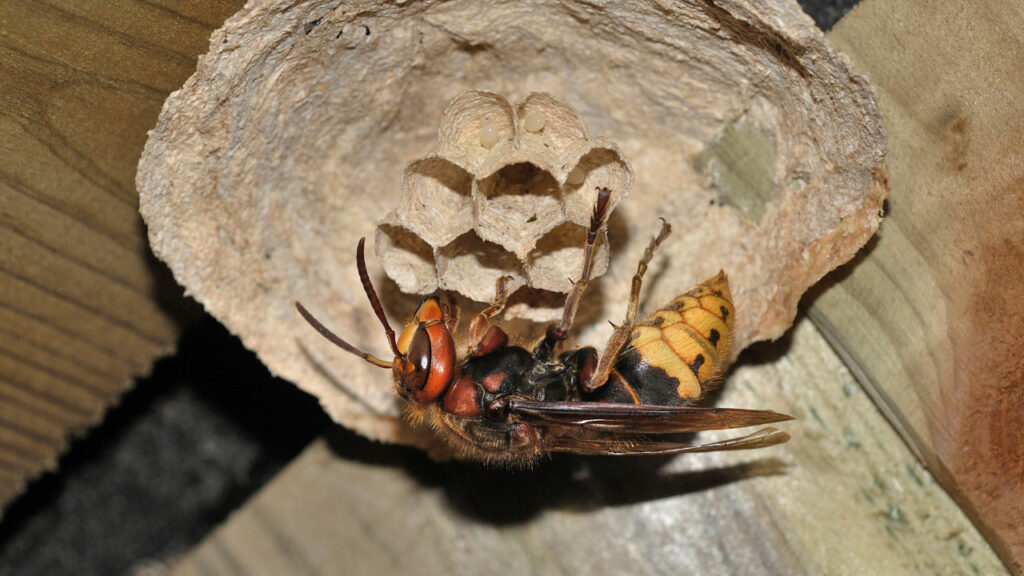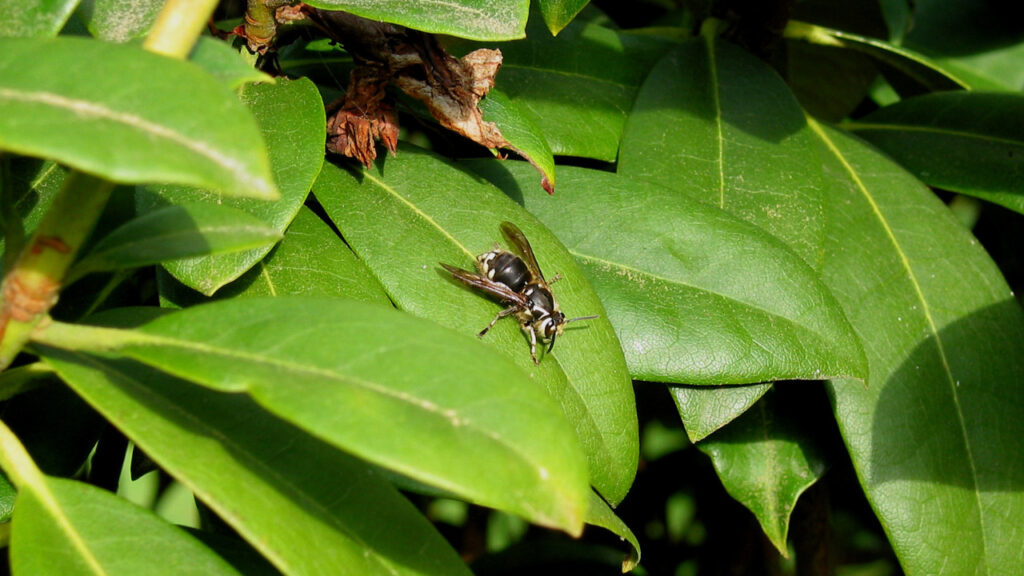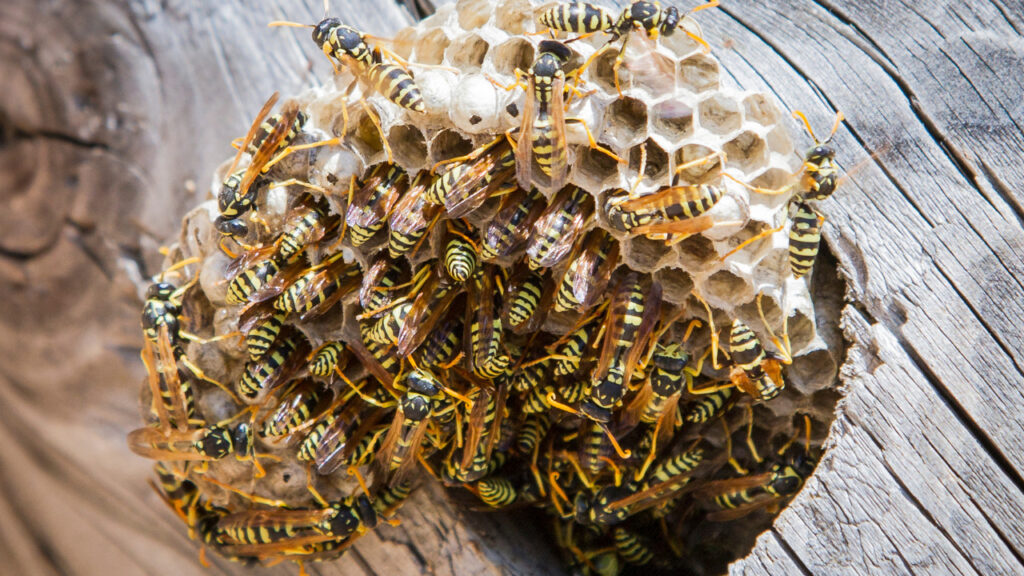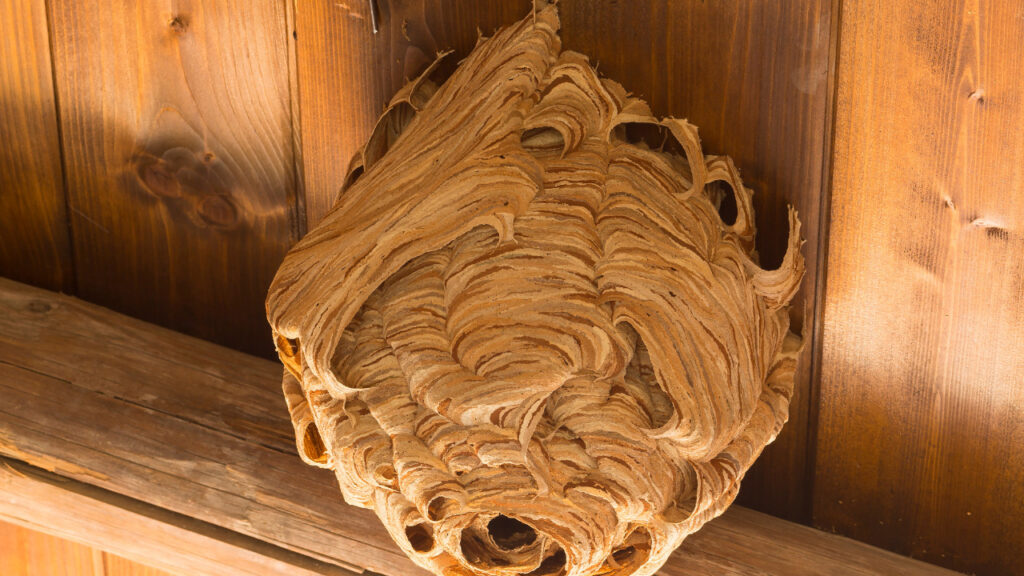A home with an outdoor garden is blissful until you hear the buzzing of a wasp near the plants. It means wasps are closer to your home and they love to roam near gardens, windows, and siding during the daytime. Homeowners often wonder how to get rid of wasps in house siding. They need to not only spot the hidden wasp nest but also take quick action before anyone gets stung by one.
Sometimes wasps are not easy to spot, but you can find the brownish-looking wasp nest rather easily. When you find wasps in siding, the first course of action is to use an insecticidal spray. But you can use several other methods to get rid of different types of wasps in siding. In this article, we will focus on tried and tested DIY methods and natural remedies to get rid of wasps behind siding.
Table of Contents
Most Commonly Types of Wasps Found Around the House
Before you can accomplish the goal of keeping the wasp away from home, you need to identify what kind it is. Not every remedy is suitable for getting wasps behind siding. Therefore, it’s best to start by learning the most common types of wasps you may encounter.
1. European Hornets

These wasps are not as aggressive as bees but are slightly larger than yellow jackets. You can find the European hornet’s nest covered by trees or other structures such as under rain gutters or perhaps even the roof fascia.
2. Paper Wasps

These wasps are black and yellow with orange-tipped antennae. They have inverted umbrella-shaped nests often seen hanging from an exposed height like a porch ceiling. Paper wasps make their nests from twigs and branches.
3. Mud Dauber Wasps

The mud dauber wasps are black, yellow, or metallic blue and black. Their bodies are slender and they are aggressive towards humans. Their nests also remember a slender tube, made out of hardened mud. You may find the nest hanging on the sides of the building.
4. Bald-Faced Wasps

The bald-faced wasps have black and white bodies, are really aggressive, and most common during fall. They are easily attracted to sugary foods. Their nests are papery and often found on trees or shrubs.
5. Yellow Jackets

Most commonly mistaken for bees, yellow jackets also have a black and yellow stripe. They are also called ground wasps. The main difference is that their bodies are thinner in comparison to bees. Also, they are highly aggressive towards humans, especially during food hunting. They build a ground nest that consists of layers of comb. If you have a hollow tree in your surroundings you may find a nest there as well.
What Do Wasp Nests Look Like?

When looking for wasp nests, keep an eye out for a brown papery material. Wasps chew things such as wood and plant particles to create this paper-like material. Remember the shape and size of a nest will vary according to the type of wasp. Some wasp nests have an open face, while some are closed.
For Instance, yellow jacket nests are on the ground or underground while bald-faced hornets have gray paper nests with an enclosed opening resembling a large egg.
You need to learn about the wasps and then hunt the nest down. If you cannot handle it, it’s best to call for professional help.
DIY Method to Remove Wasp Nest in Siding

If you want to get rid of wasps in the siding of your house, then you need to remove the nest entirely. Remove the nest during warmer months of the year. For a DIY method, you need to use dish soap (available in your kitchen) and water. Mix both items and use a spray bottle to contain the mixture. You must spray the mixture in the evening when wasps are inside their nest.
Before spraying, wear protective gear to avoid agitated wasps so that they will not be able to sting you.
Follow these steps to remove wasp nests.
Step 1: Use 2 tablespoons of liquid dish soap and water. Contain the mixture in a large spray bottle with a far-ranging spray.
Step 2: Stand at a greater distance when spraying the wasp nest. It is important to saturate the entire nest with the created mixture.
Step 3: You can remove the wasp nest, once you are sure that the wasps inside are dead.
Step 4: Place the dead nest of wasps inside a garbage bag and toss it in the garbage.
10 Easy Natural Remedies to Get Rid of Wasps Behind Siding
Besides removing the nest to get rid of wasps in house siding, you can try the natural methods as well in case wasps return.
1. Create a Wasp Trap
You can use a wasp repellent easily from the market. But you can save cash to get rid of wasps living in siding, by creating a DIY homebase wasp trap. Follow these steps to create a DIY wasp trap.
Step 1: Mark the Soda Bottle
Take an empty two-liter soda bottle to create the wasp trap. Take a permanent marker and draw a line around the bottle’s neck. It should be below the taper. Draw a straight line where you’ll need to cut it off.
Step 2: Cut off the Top of the Bottle
Take a knife or even a paper cutter (sharp one) to cut off the top of the soda bottle. Cut at the line you drew with the marker.
Step 3: Bait the Trap
You will need to add bait to the trap. Use anything sweet or enticing that would attract the wasps. It can be a fruit, sugar, jam, or drop of juice. Because wasps are looking for a protein source, sweet food items will work just fine. If not, you can also use lunch meat and place the chunk inside the trap for surety. If adding a sweetener, mix it with water for instance water with jam or sugar water.
It is important to add a bit of vinegar to the water mixture so that bees are not trapped instead. You can also spray a mixture of dish soap and water to prevent the wasps from getting out.
Step 4: Set the Trap
Now remove the cap of the bottle and turn it inside out (the mouth facing the bottom half of the bottle) to set the trap. Place it outdoors near the plant, or porch ceiling, wherever you predict the most of wasp activities.
Step 5: Hang the Trap
You can hang the wasp trap by using a piece of wire. Just punch a hole in the top of the bottle (the piece being used for the trap) and add a piece of wire or thread through it to hang it. Once the wasps are inside the bottle they can’t figure out how to get back through the opening. They will eventually die in the liquid in the trap.
2. Use a Blend of Essential Oils
As the saying goes, opposites attract, but repelling wasps may be more appropriate. Similar to how sugar attracts wasps, there are also materials that repel wasps. Clove, geranium, and lemongrass essential oils are some of the best wasp repellants.
Take a few drops of each oil type in a spray bottle. Also, add a few tablespoons of dish soap to the mixture. Fill the spray bottle with water and shake well. It is recommended to spray the solution on the nest, to get rid of wasps in siding, under the porch roofs, eaves, and roof fascia.
3. Use Peppermint Oil Solution
To get rid of wasps behind the siding, use a few drops of peppermint oil and mix with a few tablespoons of liquid dish soap in a bottle. Add the water to make a stronger mixture and shake properly. Spray the mixture on the nest and other susceptible places where wasps may fly.
4. Clean Food Scraps
Do you toss the food scraps carelessly? It is in your best interest to remove or clean the crumbs or scraps of food that you tossed near the trash cans. Wasps love to eat protein, so they will easily gather around the food scrapes before throwing the drink cans away, cleaning them out with water.
5. Cover the Trash Cans
Trash cans contain the remnants of food scraps. Maybe you threw a bottle of apple juice that was not entirely empty and had some remaining drops of the sweet liquid. If you are not covering the trash cans after garbage disposal, then it will attract the most nearby wasps. Cover the trash cans to avoid any encounter with wasps.
6. Seal the Window or Wall Cracks
To get rid of wasps living in the siding, it is important to patch up any cracks on the window or outside wall or perhaps the roof. These cracks are the perfect spot to build a nest. Before the season changes, fill the cracks to avoid wasps lying around.
7. Place Wasp-Repellent Plants
Some plants such as spearmint, thyme, eucalyptus, basil, lemongrass, and bay leaves are effective as wasp-repellent. You might grow fond of growing such plants in the outdoor garden. You can also add marigolds or geraniums to the mix too. However avoid planting sweet fennel, Queen Anne’s lace, or yarrow plants.
8. Blend Soap and Water Solution
A homemade natural remedy to get rid of wasps under siding is to use a blend of soap and water solution. Add two tablespoons of dish soap and water into a bottle. You can also add vinegar (but it’s optional). Spray the mixture on the nest and in the surrounding area. This mixture will suffocate the wasps and therefore is one of the best homemade wasp-repellent sprays.
9. Use a Fake Wasp Nest
Similar to animals, insects can be territorial. They dare not enter an already occupied territory. Therefore, hanging a decoy (fake) wasp nest can eliminate wasps. You can use a paper lunch bag and shape it in a way that makes it look like a wasp nest. This type of nest works wonders to keep bald-faced hornets at bay.
10. Use Water and Vinegar Spray
Vinegar is a miracle kitchen ingredient with multiple benefits. You can create a mixture of water and white vinegar, in equal parts, and add a couple of drops of liquid dish soap. You can spray the solution regularly in the affected area by the wasps. However, it is a temporary solution.
Trick the Wasps to Fly Away!
Knowing how to get rid of wasps living in the sidings of your house is essential to keep the outdoor space comfortable. Wasps are not always creating trouble but if they do, they can inflict serious pain. You can easily clean out the wasp infestation by following these remedies and DIY methods to keep the garden pest-free. If you are scared or unsure about doing it yourself, it is always recommended to let the professionals take care of the pest control.





